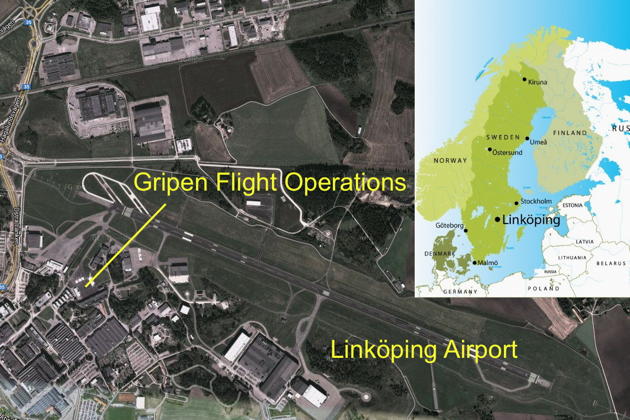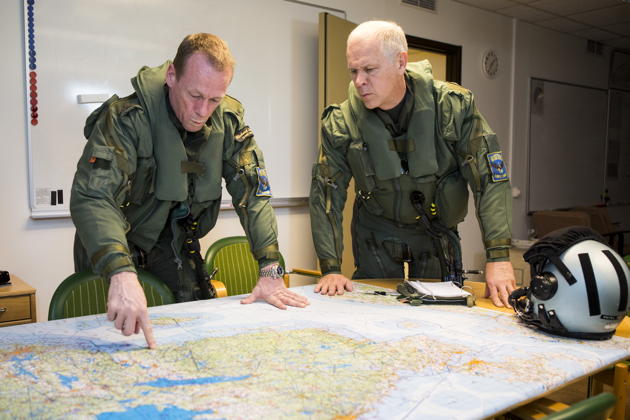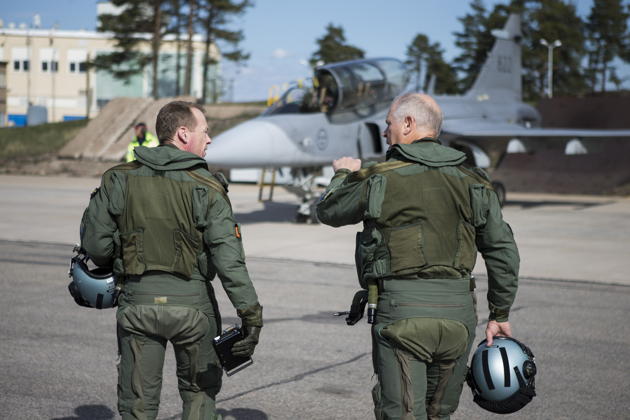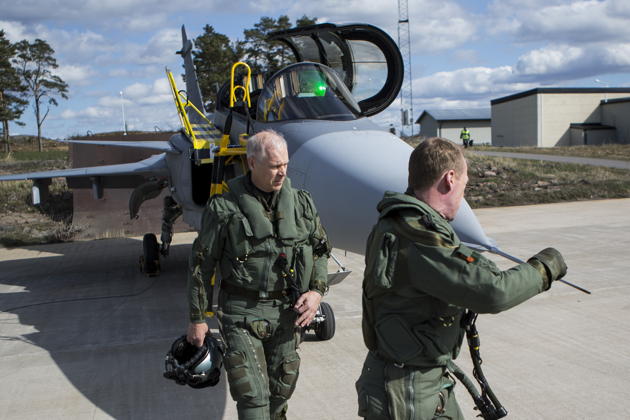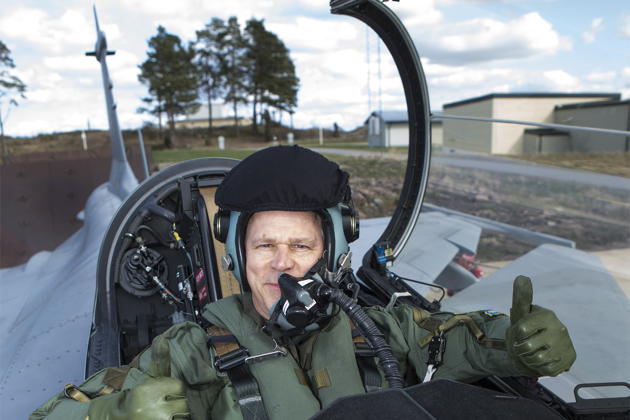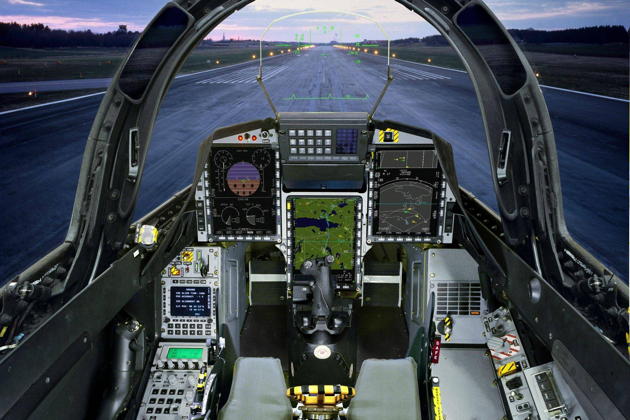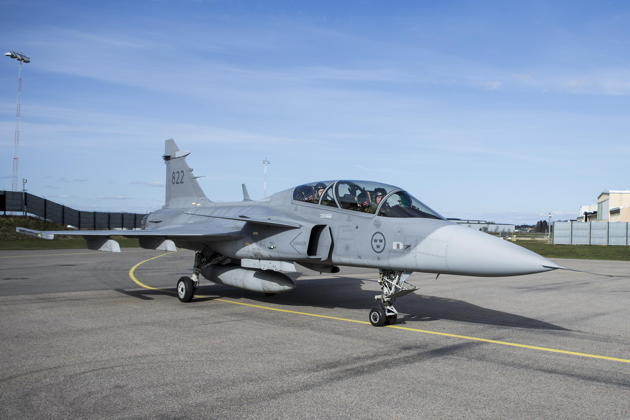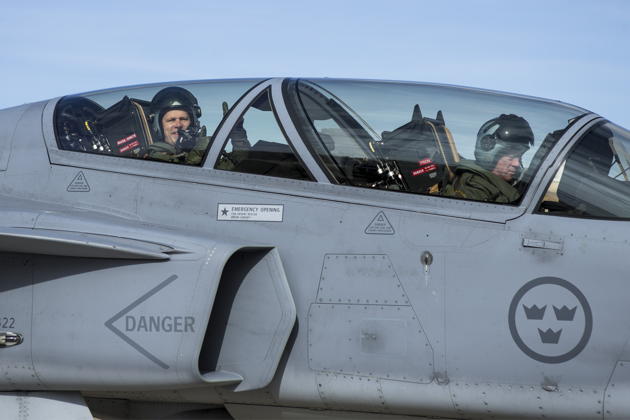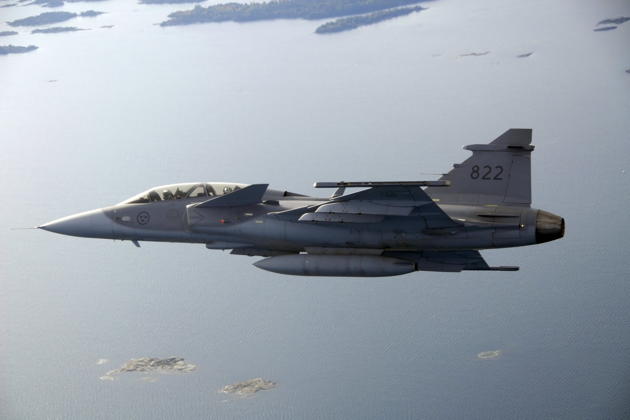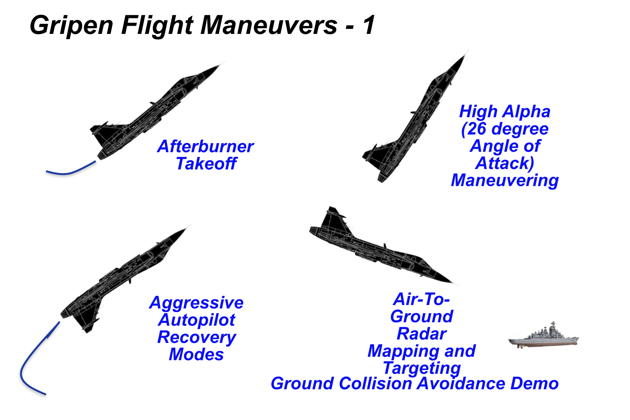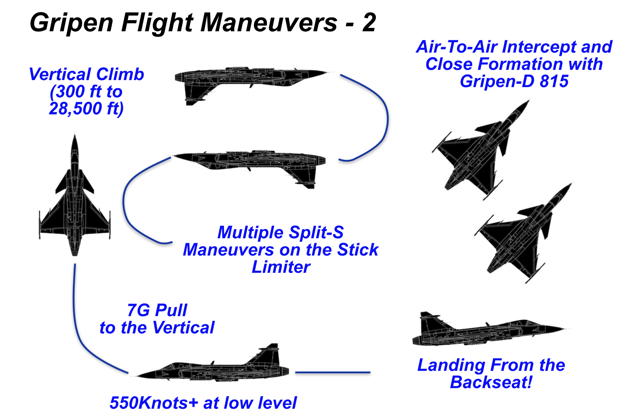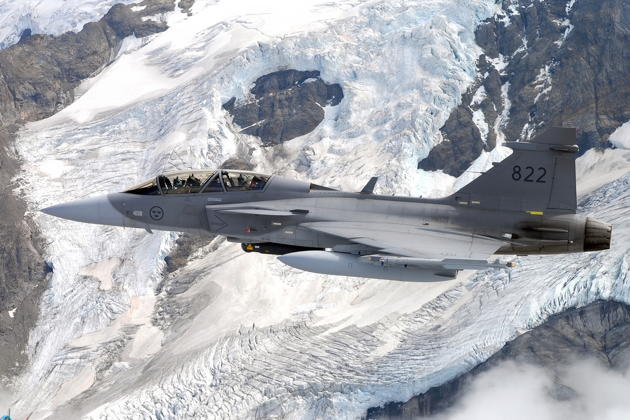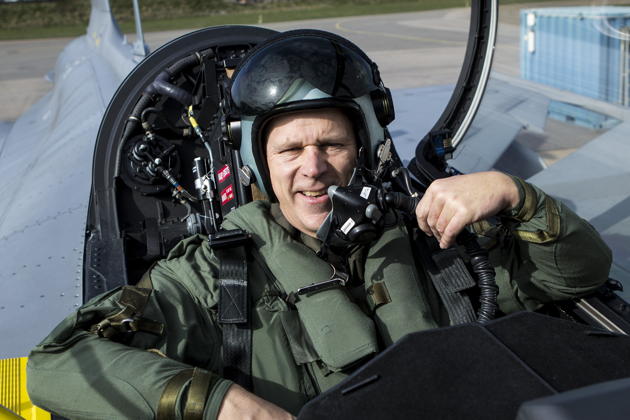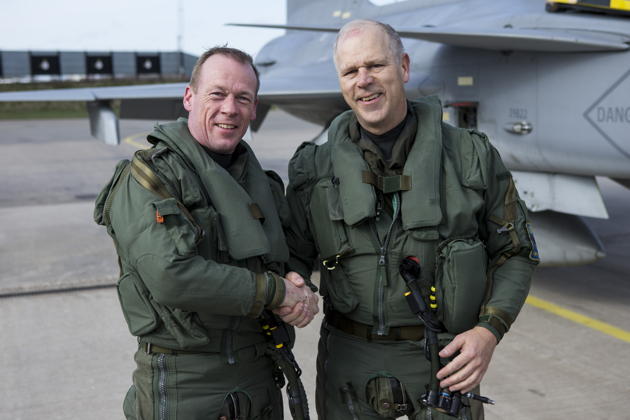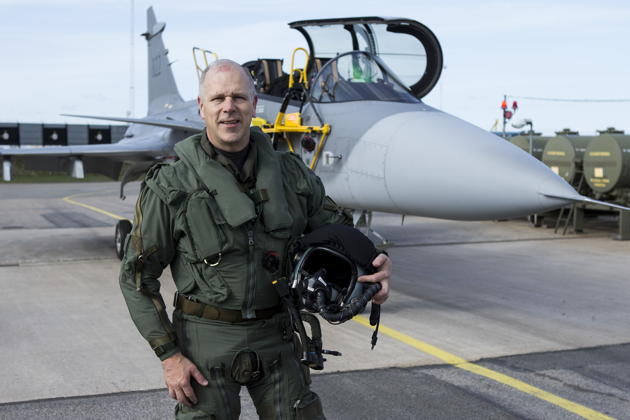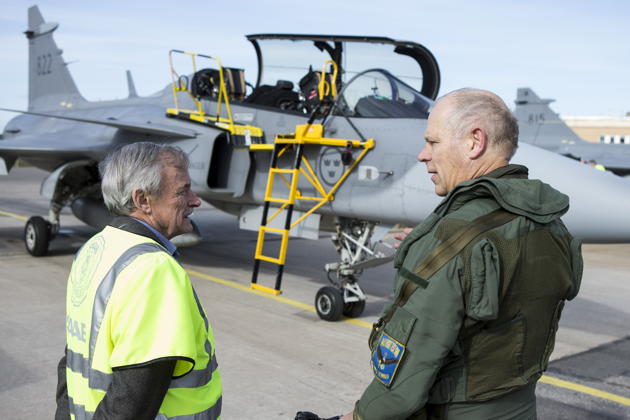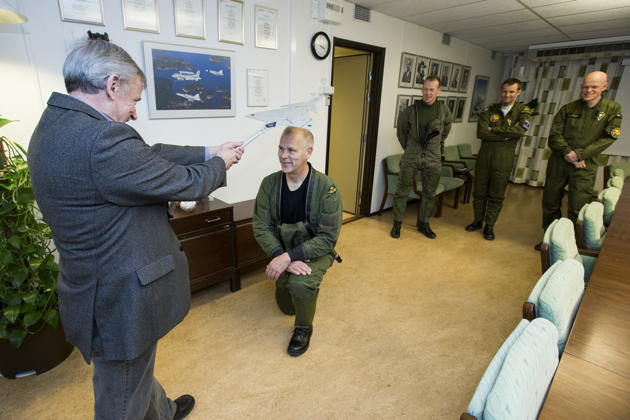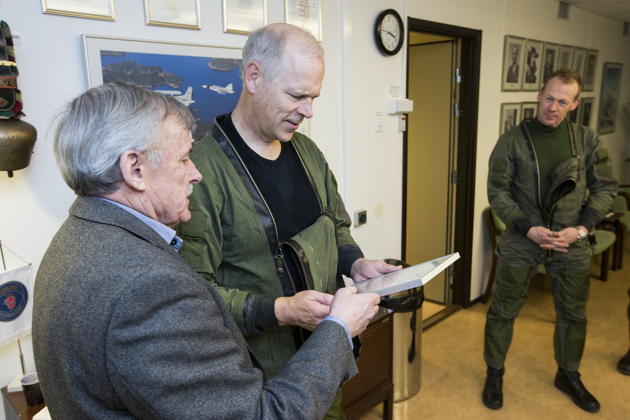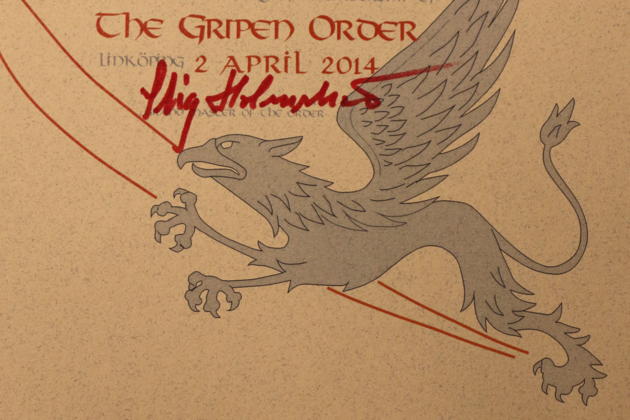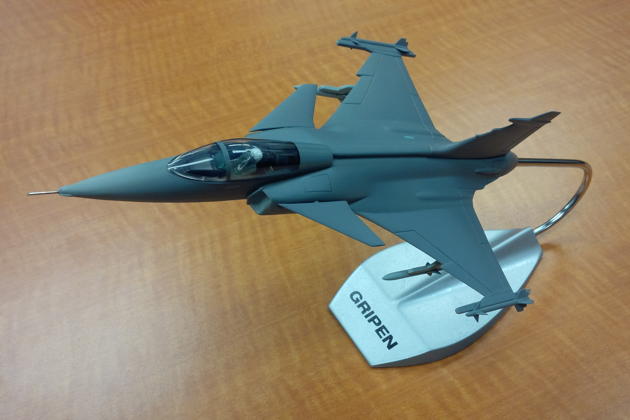FlightLog Archive
∟Aircraft Flown
Flying the Gripen - Apr 2014
OK, I'm going to have a hard time topping this one!
A big advantage of my current job is that I get to work with teammates from Saab, and have begun to develop a rapport and appreciation for their aircraft design skills. Their team has a lot of experience with the Gripen fighter design, and I've been enjoying learning about that impressive aircraft. I mentioned that if a Gripen flight was ever a possibility in the future, I would not be shy about accepting. Amazingly, the invitation was given by the Saab team for a future Gripen flight to better understand the Gripen cockpit design and the overall mission systems capability of the aircraft, and I gladly accepted!
Since I was already planning a London visit to Martin-Baker in the early spring, a combined trip to the Saab facility at Linköping, Sweden made sense to minimize business expenses. After a day of avionics and aircraft systems discussions with Saab engineers, I was scheduled for an 8:30AM start for my Gripen fly day. I first met with Richard Ljungberg, the Saab Chief Test Pilot, who would be the front seat pilot for my flight in the JAS-39D Gripen. After introductions with Richard and Hans Einerth, the Wing Commander Flying for Saab, I started with Life Support equipment sizing. Since we were planning to fly over the very chilly Baltic Sea, I was first fitted for an exposure suit, then an Anti-G suit, flight boots, a harness with a flotation device, and finally a flight helmet. I changed into a more comfortable standard flight suit for an extensive Gripen pilot-vehicle interface and systems overview. Richard then provided me instruction for an hour in a nearby Gripen cockpit flight simulator, reviewing the cockpit and display switchology, the weapon system operation for air-to-air and air-to-ground, the Ground Collision Avoidance System, and our mission profile review. A private lunch followed in the operations building.
Richard and I suited up into our full flight gear, reviewed the mission profile in detail, and then stepped outside into a glorious, cool sunny day with nearly clear skies and excellent visibility. We proceeded to accomplish a pre-flight walkaround of Gripen tail number 822 with three other Gripens on the local ramp. During the walkaround, I noted the compact size of the Gripen, the standard angle-of-attack (pitch) probes, but also the Beta (yaw) probes, wing hardpoints, and the Volvo RM12 variant of the GE F404-402 engine.
With Richard's help, I strapped into the snug rear cockpit, connected the arm and leg restraints on the Martin-Baker Mk.10LS ejection seat, and was still able to check six with good visibility fore and aft from the back seat. After starting the APU, closing the canopy and checking our intercom, Richard initiated the very automated aircraft startup. After a surprisingly short timeframe, we were ready for taxi. The flight that followed greatly exceeded my expectations, and reminded me how great it is to fly fighters!
As we rolled onto runway 11 at Linköping, Richard completed a tight 360-degree turn on the runway without engaging any special nosewheel steering modes, showing off the excellent ground maneuvering capability. We were cleared for takeoff, and I felt the very welcome push back in my seat from the afterburner engaging. The burner felt great, and combined with an aft stick input to the soft stop, we leaped off the ground and started climbing southeast to the M2 working area off the east coast of Sweden. In the climb, I maneuvered lightly to get a feel for the smooth flight control harmony and tight response, and found out I could get the nearby canards to 'wave' with slight fore/aft stick movements. Overall, handling was exquisite.
As we continued past the coastline and climbed into the working area over the Baltic Sea, I tried some high Angle-Of-Attack (AOA) maneuvering, to 26 degrees AOA, and roll response was phenomenal even at low speeds. Picking up some speed, I flew with autopilot aiding modes selected, demonstrating the impressive level turn capability with up to 60 degrees of bank using only the rudder pedals, with the autopilot keeping us in fully coordinated flight. I then checked out the equivalent of 'control stick steering' with autopilot selected. The autopilot will return the aircraft to level flight after pilot inputs have stopped, and in the case of a climb at 30 degrees above the horizon, the autopilot aggressively rolls inverted with a pull to the horizon for recovery on its own. You can tell the system was designed and refined with fighter pilot input, since the autopilot maneuvering is crisp, uses rolls and positive G's, and minimizes negative G inputs.
Richard and I checked out the ground radar mapping capability, acquiring and targeting some ships of interest in Baltic, then flying to within visual range to confirm the track/target. I wanted to check out the Ground Collision Avoidance System (GCAS), so I manually descended to below 2000 feet while moving from the water to the inlets and islands along the Swedish east coast. We wanted to be over land to get a better estimation of altitude, since overwater height awareness is often misleading. Richard took over and demoed the warnings and pull-up commands as we descended at 325 knots with 10 degrees of descent to below 300 feet, and flew two impressive low-level descents and pull-ups. Coupling the visual and aural cues with automatic pull-up, the system will be a significant help in avoiding controlled flight into terrain accidents.
I climbed to altitude again as we used the air-to-air radar to intercept and join up with Gripen 815, which was also in the overwater flying area. Richard let me fly close fingertip formation with Hans Einerth, the Wing Commander Flying. I was impressed with both the Gripen's stability and responsiveness in close formation, allowing me to stay effortlessly locked in close. The Gripen can definitely make an old fighter pilot look good!
I departing the formation and we descended in full afterburner for a run at low level to 550 knots +, followed by a 7G pull-up to the vertical, rolling out inverted above 28,000 feet. Richard then talked me into two consecutive maximum performance Spilt-S maneuvers while I pulled back to the soft stop on the stick throughout the maneuvers. Impressive performance and handling.
Unfortunately, we had to begin exiting the area for some approaches back at Linköping, so Richard gave me a suggested altitude and heading as we descended back inland. Richard flew the first demonstration of a Military ILS, and after I got a good view of the first approach from the backseat, he handed over the controls as we climbed out from the touch and go. Using some of the autopilot modes initially, I made a wide circuit of the airfield and positioned myself on final. Although I had a decent view through the forward widescreen, I was aided with a nice backup view of flight parameters on the HUD repeater in the backseat, which I used for my airspeed and AOA reference on final. Given the Gripen's stability on the approach, I was able to hold a smooth 12-unit AOA approach, giving us a nice touchdown and go around from the backseat after only seeing it once.
After the backseat landing and go around, I handed the control off to Richard for a very impressive 14-degree AOA approach and short field landing. Richard touched down with full brakes on, and after touchdown the canards were an impressive sight with full canard tips down. We slowed rapidly in around 1100 feet, and then relaxed the brakes to make it to the turnoff.
The class act by the Saab team did not end with the landing, however. As I climbed down with a wide grin on my face, Gripen Pilot #1, Stig Holmström, greeted me. Immediately after returning to the Operations building, Richard, Hans and a few other Gripen pilots joined me with Stig as he inducted me, with all due ceremony, into the Order of the Gripen, followed by an appropriate Swedish Skål (Salute).
Richard, Hans, Stig, Thomas, Eddy, Ted - Thank you for this outstanding opportunity to understand the amazing aircraft that is the Gripen, and to get a glimpse into the impressive design capability of the Saab team. Now I really need to talk Boeing into buying me a Gripen!
 KASPRZYK
KASPRZYK